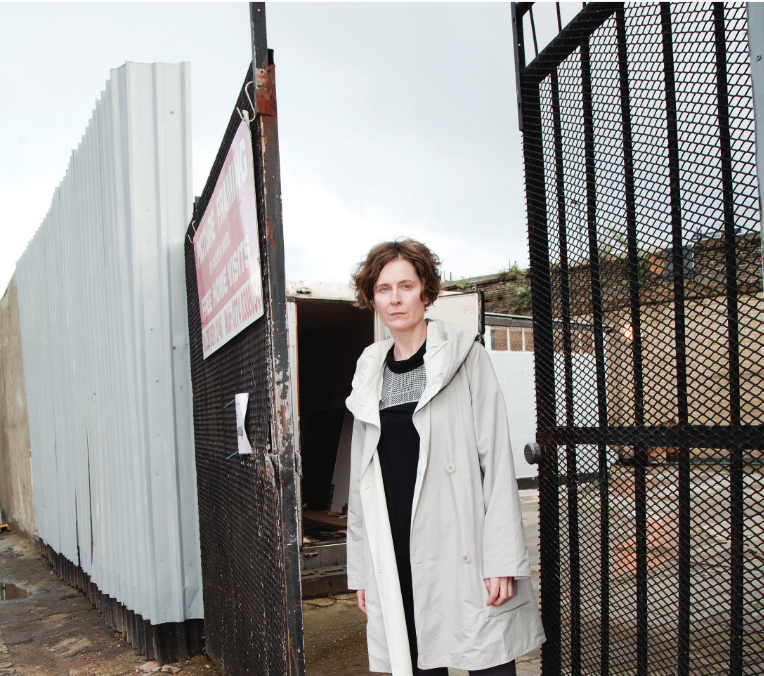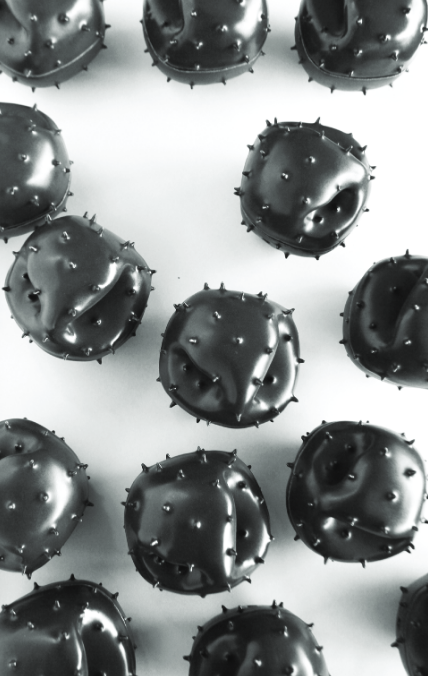A Highly Sensitive Exhibition
As part of the Dean’s Lecture Series 2022, special guest Professor Jennifer Gabrys (University of Cambridge) contributed to an exhibition exploring environmental sensors in art, design, landscape, planning, architecture and community.

Curated by MSD’s Wendy Walls and Judy Bush, “Highly Sensitive” showcases work gathered from research and teaching in the Melbourne School of Design within the aligned disciplines of landscape architecture, urban planning, construction, and architecture. The work explores the role of environmental sensors and the multitude of information they can provide about the world around us, from temperature and air quality measurements to feedback from noise and touch.
For the built environment professions, these forms of data represent a crucial step in how we think about our environments and what we create within them.
The exhibition features work from:
Jennifer Gabrys
Robert Walton & Zaher Joukhadar
Stelarc, Paul Loh with David Leggett, Yuhan Hou, Haoyu Chen and Quishi Zhou
Alexander Holland, Julian Rutten, and Stanislav Roudavski
Djordje Stojanovic, Milica Vujovic, Milan Katic and Yi Ding
Tony Yu and Stanislav Roudavski
Siqing Chen and Zhizhen Wang
Alex Felson and Anna Mueller
Wendy Walls, Ravi Bessabava and Fiona Johnson
And students from the Melbourne School of Design.
Here, we publish excerpts from the Highly Sensitive exhibition catalogue, and provide the full catalogue for download.
Introduction
Wendy Walls & Judy Bush
Environmental sensors offer us unprecedented information about the world around us. From
temperature and air quality measurements to feedback from noise and touch, we can digitally capture and respond to our complex and changing environment. For the built environment professions, these forms of data and their responsiveness represent a significant step in how we think about and what we create within our environments.
 Sensing technology captures local scale, fine-grained data to reveal a place’s specific characteristics and workings and the interactions between different site features and designs. With sensors, we can examine how a tree impacts the temperature of the playground it is shading or how the layout of a street affects the air quality in the neighbouring outdoor eating area. When we collect and communicate this information through real-time feedback, visualisations, and simulations, our responses expand from understanding the world to becoming a powerful means of making change. Environmental sensors allow us to check our assumptions and direct our actions in ways that we may not have anticipated.
Sensing technology captures local scale, fine-grained data to reveal a place’s specific characteristics and workings and the interactions between different site features and designs. With sensors, we can examine how a tree impacts the temperature of the playground it is shading or how the layout of a street affects the air quality in the neighbouring outdoor eating area. When we collect and communicate this information through real-time feedback, visualisations, and simulations, our responses expand from understanding the world to becoming a powerful means of making change. Environmental sensors allow us to check our assumptions and direct our actions in ways that we may not have anticipated.
This exhibition celebrates these opportunities of environmental sensing as tools that ‘keep us honest’ by revealing the environment in new ways and allowing us to respond to real-time conditions. The work is gathered from research and teaching in the Melbourne School of Design within our aligned disciplines of landscape architecture, urban planning, construction, and architecture. Consistent across the work is the aim of using environmental sensors to make a positive change to the quality and experience of the environment.
The projects range from urban design based on the temperature sensor data of urban microclimates to the visualisations of light, air, and temperature. There is also work with sensors used as reactive devices, for example, the pneumatic muscle and the microclimatic misting tree. We are very excited to include the work of our visiting Dean’s lecture guest, Professor Jennifer Gabrys. She practices and writes extensively on working with sensors with community groups in contaminated environments. The work displayed here is from her forthcoming book Citizens of Worlds and shows air quality sensors used to collaborate with communities to monitor air pollution from fracking infrastructure, document traffic emissions, and create air quality gardens.
The detail of sensed data reveals our environment and our place and influence within it. Particularly as our climate continues to change, we need to draw together the range of tools, data, and knowledge to plan and design healthy and sustainable places to live.
 Jennifer Gabrys is Chair in Media, Culture and Environment in the Department of Sociology at the University of Cambridge. She leads the Planetary Praxis research group and is Principal Investigator on Smart Forests:Transforming Environments into Social-Political Technologies. She also leads the Citizen Sense and AirKit projects.
Jennifer Gabrys is Chair in Media, Culture and Environment in the Department of Sociology at the University of Cambridge. She leads the Planetary Praxis research group and is Principal Investigator on Smart Forests:Transforming Environments into Social-Political Technologies. She also leads the Citizen Sense and AirKit projects.
She is the author of How to Do Things with Sensors (2019); Program Earth: Environmental Sensing Technology and the Making of a Computational Planet (2016); and Digital Rubbish: A Natural History of Electronics (2011). Her most recent book on the Citizen Sense project titled, Citizens of Worlds: Open-AirToolkits for Environmental Struggle, is forthcoming from University of Minnesota Press.
Citizens of Worlds: Open-Air
Toolkits for Environmental Struggle
 University of Minnesota Press, 2022 Pre-publication chapters can be viewed here. Environments are increasingly sites of pollution, extraction, disaster, and development. Citizens of Worlds examines how citizen-sensing technologies and practices observe, evidence, and act on environmental disturbance. By focusing especially on how people use sensors and sensing technologies to monitor air quality, this book asks who or what constitutes a “citizen” in citizen sensing. How do digital sensing technologies enable or constrain environmental citizenship? Taking the form of a how-to guide, Citizens of Worlds documents projects from the Citizen Sense research group, which built digital sensor toolkits for documenting and analyzing air pollution.
University of Minnesota Press, 2022 Pre-publication chapters can be viewed here. Environments are increasingly sites of pollution, extraction, disaster, and development. Citizens of Worlds examines how citizen-sensing technologies and practices observe, evidence, and act on environmental disturbance. By focusing especially on how people use sensors and sensing technologies to monitor air quality, this book asks who or what constitutes a “citizen” in citizen sensing. How do digital sensing technologies enable or constrain environmental citizenship? Taking the form of a how-to guide, Citizens of Worlds documents projects from the Citizen Sense research group, which built digital sensor toolkits for documenting and analyzing air pollution.
This practice-based study describes collaborations with people to monitor air pollution from fracking infrastructure, document traffic emissions, and create air quality gardens. In the process of installing sensing technologies, this study considers the aspirations, collaborations, troubleshooting, disappointments, and political change that are forged in specific sensing projects. As these projects show, how people work with, respond to, care for, shape, fight for, and transform environments informs the political subjects and collectives that they become. Citizens and worlds materialize through attempts to sense and struggle toward more breathable conditions.
Photographs by Citizen Sense.
Excerpts have been taken from the Highly Sensitive exhibition catalogue. See all the projects and download the full version here.

Image: Highly Sensitive exhibition official opening in the Melbourne School of Design's Atrium.